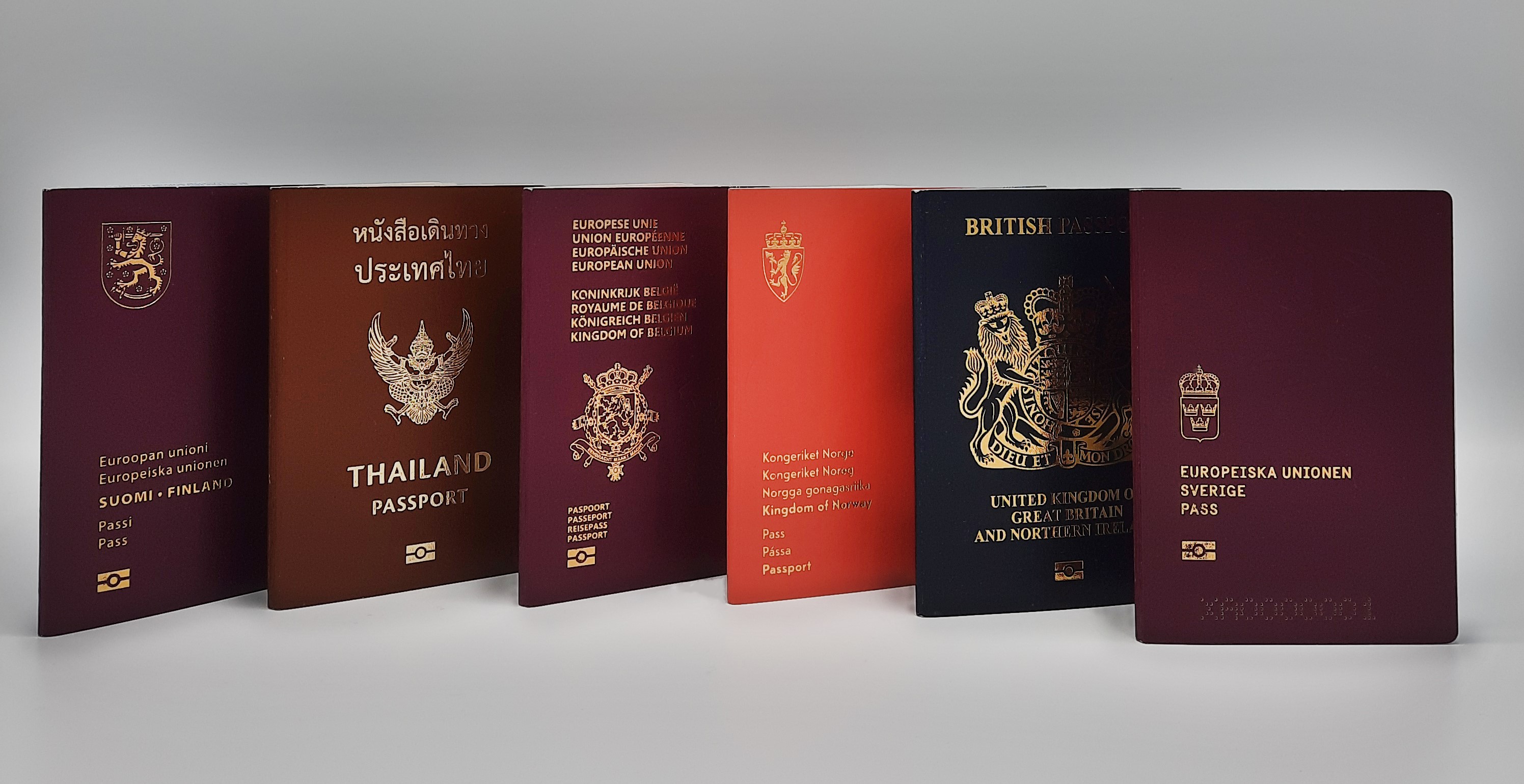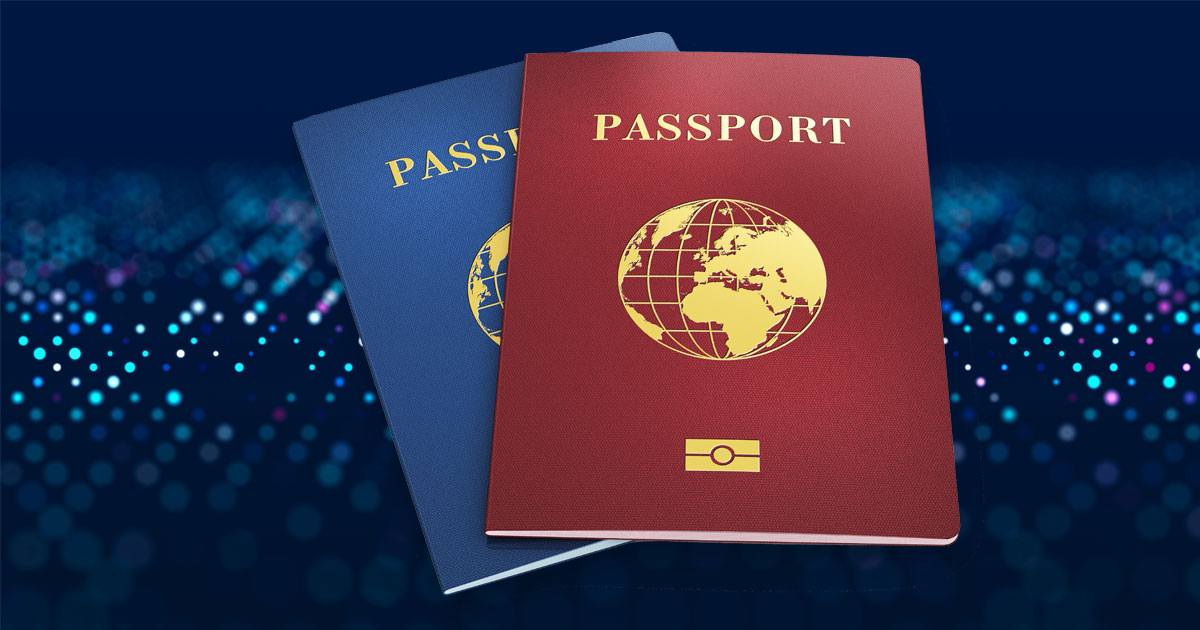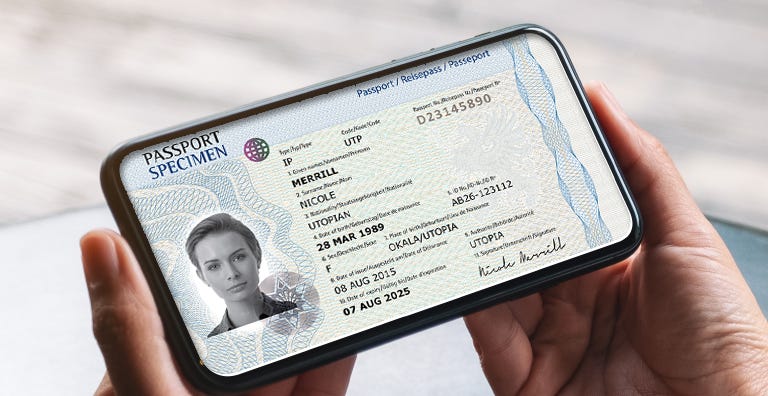The Digital Passport Revolution
- Get link
- X
- Other Apps
The Digital Passport Revolution: How Biometric Technology is Transforming Global Travel in 2025
A comprehensive look at the global implementation of digital travel credentials and what it means for the future of international travel
The Dawn of Digital Travel Identity

Next-generation electronic passports with embedded biometric data are becoming the global standard. Source: Thales Group
In 2025, the world stands at a pivotal moment in travel documentation history. Traditional paper passports, which have changed little in fundamental design for decades, are being rapidly supplemented—and in some cases replaced—by sophisticated digital travel credentials (DTCs) and biometric identification systems.
This shift represents far more than a technological upgrade—it marks a fundamental change in how we establish and verify identity across borders, promising to make international travel more seamless while simultaneously raising new questions about privacy, security, and access.
"Electronic passports incorporating microchips, biometric data, and digital identification systems are being implemented globally to enhance security and streamline the travel experience." — MobileIDWorld, April 2025
As countries race to implement the latest biometric technologies, travelers in 2025 increasingly find themselves using facial recognition to board planes, smartphone-based digital credentials to cross borders, and encountering fewer traditional passport checks—a transformation accelerated by international standards and the growing implementation of systems like the European Union's Digital Travel Credential (DTC).
How Digital Travel Credentials Work

The interconnected ecosystem of digital identity verification. Source: ZignSec

The standard biometric passport symbol indicating embedded chip technology. Source: Biometric Update
Digital Travel Credentials (DTCs) build upon the foundation established by electronic passports (e-passports) that have been in circulation since the early 2000s. However, they take the concept significantly further by enabling the secure storage and transmission of biometric identifiers through mobile devices and centralized systems.
Core Components of Digital Travel Credentials
- Biometric Data Storage: Securely stores facial images, fingerprints, and in some implementations, iris scans
- Mobile Applications: Smartphone-based interfaces for travelers to manage their digital identity
- Verification Infrastructure: Backend systems that validate credentials against issuing authority databases
- Encryption Technology: Multi-layer security protocols to protect stored and transmitted personal data
- International Standards Compliance: Adherence to ICAO's DTC specifications and regional frameworks like eIDAS 2.0 in Europe
According to the International Civil Aviation Organization (ICAO), there are three primary "types" of DTCs being implemented globally:
| DTC Type | Description | Physical Passport Requirement |
|---|---|---|
| Type 1 | Digital representation of physical passport that must be presented alongside the physical document | Required |
| Type 2 | Independent digital credential that can be used without the physical passport, but physical passport still exists | Not required at checkpoints |
| Type 3 | Fully digital credential that replaces physical passport entirely | Does not exist |
As of mid-2025, most implementations globally are focused on Type 1 DTCs, with several pilot projects exploring Type 2. Full Type 3 implementation remains largely conceptual, though countries like Finland have begun limited trials for specific travel corridors.

TSA's AI-powered biometric immigration security system being demonstrated at CES 2025. Source: TechInformed
Global Implementation: Countries Leading the Change

India's new high-tech passport system showcasing digital identity integration. Source: Financial Express
The global transition to digital passports and biometric travel credentials is proceeding at varying paces across different regions. As of May 2025, several key implementations stand out:
European Union Digital Travel Credential (DTC)
The EU's comprehensive Digital Travel Credential framework represents one of the most ambitious implementations globally. Key features include:
- Integration with the Entry/Exit System (EES) scheduled for full implementation in October 2025
- Standardization across all 27 member states plus associated Schengen countries
- Compatibility with the eIDAS 2.0 framework for cross-border identity verification
- Pilot programs currently active at major airports in Paris, Amsterdam, Frankfurt, and Madrid
Global Implementation Timeline (2025)
- Finland: First country to launch fully operational digital passports for specific travel corridors
- United Arab Emirates: Abu Dhabi's Zayed International Airport to require biometric boarding for all passengers by late 2025
- Singapore: Deploying facial recognition across all terminals of Changi Airport, eliminating need for physical documents at multiple checkpoints
- United Kingdom: Electronic Travel Authorization (ETA) system fully operational as of March 2025
- India: National rollout of digital passport integration with Aadhaar biometric ID system
- United States: TSA facial recognition extended to 25 major airports, mobile driver's license acceptance for domestic travel
- Vietnam: Digital identification system for foreign nationals launching July 1, 2025
- Nigeria: Expanded digital passport system now available in US and several Latin American countries
- Australia: Digital Passenger Declaration replacing physical arrival cards, integrated with biometric processing
- Armenia: New biometric identification system announced for implementation in 2026
According to a May 2025 study by ABI Research, digital travel credentials are projected to achieve a 15% global penetration rate by 2032, with the most rapid adoption occurring in high-income East Asian and European markets.

Biometric verification systems are enhancing travel security and efficiency. Source: Aware, Inc.
Privacy and Security Concerns
The rapid implementation of digital travel credentials has raised significant concerns among privacy advocates, security experts, and digital rights organizations. In January 2025, a coalition of European digital rights groups highlighted several key areas of concern:
Primary Privacy Concerns
- Insufficient safeguards for biometric data protection
- Risk of function creep beyond border control
- Potential for unauthorized tracking and surveillance
- Questions about data retention periods
- Third-party access to sensitive personal information
Technical Security Vulnerabilities
- Potential for identity theft through credential spoofing
- Security of mobile devices storing credentials
- Interoperability challenges between national systems
- Vulnerability to cyber attacks on centralized databases
- Questions about backup and fallback procedures
"The European Commission's proposal does not contain any concrete security requirements for safeguarding biometric data." — Digital Rights Coalition, January 2025
These concerns have led to various regulatory responses. The EU's proposal for Digital Travel Credentials has faced particular scrutiny regarding the distinction between "creation" and "issuance" of credentials, with Eurosmart's April 2025 position paper calling for clearer definitions and stronger security requirements.
Security Boulevard's March 2025 analysis highlighted that while digital passports offer potential security advantages through more sophisticated anti-forgery measures, they also create new attack vectors that traditional physical documents don't present.
Key Challenge: Digital Divide
A significant concern remains how to ensure universal access to travel as systems increasingly rely on smartphones and internet connectivity, potentially disadvantaging elderly travelers, those from lower-income regions, or individuals with certain disabilities.

The evolving landscape of identity verification in international travel. Source: Regula
The Future of International Travel
As digital travel credentials gain broader adoption through 2025 and beyond, several key trends are emerging that will shape the future of international travel:
Frictionless Travel
Integrated biometric systems will enable seamless movement from airport entry to aircraft boarding without document presentation at multiple checkpoints.
Enhanced Security
Multi-modal biometric verification will significantly reduce identity fraud while allowing for more precise traveler risk assessment.
Universal Standards
ICAO and regional frameworks will continue driving international standardization, though implementation speeds will vary significantly.

Digital passport technology is reshaping travel experiences globally. Source: Medium
Near-Term Developments (2025-2027)
The most immediate changes travelers will experience include:
- Widespread implementation of the EU's Entry/Exit System (EES) by late 2025, requiring all non-EU nationals to register biometrics
- Integration of travel authorization systems (like ETIAS in Europe) with digital travel credentials by 2026
- Proliferation of "digital border" apps that allow travelers to complete customs and immigration procedures before arrival
- Greater use of contactless biometric corridors at major international airports
Long-Term Vision (2028 and Beyond)
Looking further ahead, experts anticipate:
- Evolution toward Type 3 DTCs that fully replace physical passports in some travel corridors
- Integration of health credentials and vaccination records into travel identity systems
- Development of global identity verification standards that work across government and private sector applications
- Emergence of "continuous authentication" systems that maintain identity verification throughout the travel journey
"With a simple biometric scan, travelers could verify their identity, receive boarding passes, and board flights — all without handling physical documents. This isn't science fiction; it's the reality taking shape in 2025." — Nick Careen, Henley & Partners Global Mobility Report 2025
The Balance Point
The ultimate success of digital travel credentials will depend on finding the right balance between convenience, security, privacy, and accessibility—a challenge that will continue to define implementation efforts throughout this decade.
Conclusion: Navigating the Digital Identity Era

The integration of biometric technology with travel documentation is permanently changing border control procedures. Source: Aratek Biometrics
The digital passport revolution of 2025 represents a watershed moment in the history of international travel and identity verification. As governments and international organizations push forward with ambitious implementation timelines, travelers are experiencing a transition period characterized by both exciting innovations and legitimate concerns.
For individual travelers, the benefits of faster processing, enhanced security, and reduced document handling are significant. Yet questions about data protection, surveillance potential, and the digital divide remain to be fully addressed. The success of these systems will ultimately depend not just on their technical implementation but on the regulatory frameworks that govern them and the public trust they can establish.
What is clear is that the traditional passport—a document concept that has existed in some form for centuries—is undergoing its most significant transformation since the introduction of machine-readable travel documents in the late 20th century. As we progress through 2025, the digital travel credential is no longer simply a future concept but an emerging reality reshaping borders and travel experiences worldwide.
For Travelers in 2025
To navigate this changing landscape, international travelers should:
- Ensure passport biometric chips are functioning properly
- Be aware of new entry requirements for destinations, particularly the EU's EES implementation
- Consider downloading official travel credential apps for frequent destinations
- Maintain physical travel documents even when digital alternatives exist
- Stay informed about privacy settings and data management options for digital credentials
References and Further Reading
- European Union. (2025, April 14). "Revised timeline for the EES and ETIAS." https://travel-europe.europa.eu
- MobileIDWorld. (2025, April 23). "Global Shift to Electronic Passports and Digital ID Systems Set for 2025." https://mobileidworld.com
- Biometric Update. (2025, April 28). "EU SafeTravellers project works to secure biometric digital travel credentials." https://www.biometricupdate.com
- Eurosmart. (2025, April 10). "Position Paper on the EU Digital Travel Application." https://www.eurosmart.com
- ICAO. (2025). "Digital Travel Credentials: The future of international travel." https://unitingaviation.com
- ABI Research. (2025, March 18). "Digital Travel Credentials Take Off, Achieving 15% Global Penetration by 2032." https://www.prnewswire.com
© 2025 | This article was last updated on May 30, 2025
- Get link
- X
- Other Apps

Comments
Post a Comment